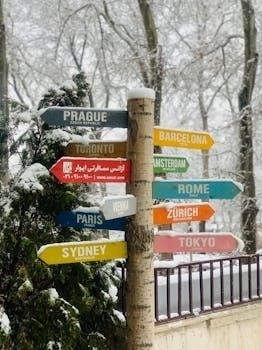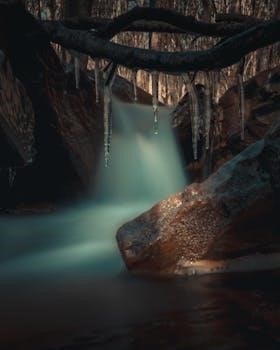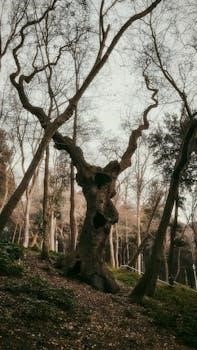enchanting wotlk leveling guide
- by stephany

Enchanting is a primary crafting profession in World of Warcraft, allowing players to enhance their armor and weapons using formulas and ingredients. Disenchanting items is a key method to obtain enchanting materials.
What is Enchanting and its Purpose
Enchanting in World of Warcraft⁚ Wrath of the Lich King is a crafting profession focused on permanently improving equipment. Players use enchanting formulas and gathered materials to add beneficial effects to weapons and armor, boosting stats and abilities. This enhances character performance and is a crucial part of character progression, making enchanters highly sought after.

WotLK Enchanting Leveling Overview
Leveling enchanting in Wrath of the Lich King involves progressing from skill level 1 to 450. This requires gathering materials, learning new recipes, and strategic crafting.
Leveling from 1 to 450
The journey from Enchanting skill level 1 to 450 in WotLK requires a significant investment of time and resources. It involves progressing through various tiers of recipes, starting with basic materials and gradually moving to more complex ones. Efficient leveling requires careful planning, material gathering, and understanding which recipes provide the most skill points per material cost.
Importance of Materials for Leveling
Materials are the backbone of leveling Enchanting. Without sufficient quantities of dust, essences, and crystals, progression is impossible. The availability and cost of these materials can fluctuate significantly, impacting the overall expense and speed of leveling. Some materials are more easily obtained by disenchanting items, while others might require purchasing from the Auction House. Careful management is key.
Enchanting Materials and Sources
Enchanting materials are primarily obtained by disenchanting gear. These materials can also be purchased from the Auction House, or acquired through alternative in-game methods.
Disenchanting Gear for Materials
Disenchanting is a core method for obtaining enchanting materials. Any uncommon (green) or higher quality equipment can be disenchanted into essences, dust, and shards, which are essential for creating enchantments. Higher quality items yield more valuable and potent materials. This makes farming dungeons and questing for gear a useful way to gather supplies for enchanting.
Purchasing Materials from Auction House
The Auction House serves as a convenient way to acquire enchanting materials, especially if you’re looking to bypass the farming aspect. Players can buy various dusts, essences, and shards, though prices can fluctuate based on server demand. Utilizing a spreadsheet to track material costs and prioritize the most cost-effective paths is recommended to manage expenses while leveling.
Alternative Ways to Obtain Materials
Besides disenchanting and the Auction House, materials can sometimes be found as loot from enemies or within containers across Azeroth and Northrend. Certain vendors may also offer specific enchanting materials, although their availability can be limited. Combining these methods with disenchanting and Auction House purchases can provide a more consistent material flow while leveling enchanting.
Enchanting Rods and Their Importance
Enchanting rods are essential tools for enchanters, required to apply enchantments to gear. Different types of rods are needed for different level enchantments, though higher-level rods can be used for lower-level ones.
Different Types of Enchanting Rods
Enchanting utilizes various rods, each crafted from different metals, such as copper, silver, and runed fel iron. These rods are necessary for applying enchantments, with higher-level rods like the runed adamantite rod required for more potent enchantments. As you progress, you’ll upgrade your rod to handle increasingly complex enchantments, eventually using one high-level rod for all.
How to Use Enchanting Rods
Enchanting rods are essential tools; they are not consumed but must be equipped to apply enchantments. To use a rod, you select an enchanting formula, then click on the item you wish to enchant. The appropriate rod for the recipe must be in your inventory, so the crafting menu will show which one is needed. Higher-level rods can be used for lower-level recipes.

Enchanting Recipes and Formulas
Enchanting recipes are learned from trainers, vendors, or as drops. These recipes dictate what enchantments you can apply to gear. Acquiring a variety of recipes is key for leveling.
Trainer Recipes
Trainer recipes are your foundation for enchanting. You will learn the basic enchantments from your enchanting trainer in major cities. These recipes are crucial for the early levels, establishing the essential skills needed to progress. Regularly visit your trainer to learn new recipes as your skill increases and do not miss new recipes.
Vendor Recipes
Vendor recipes are acquired from various NPCs throughout the game world. These vendors often sell recipes that are not available from trainers, offering a wider range of enchantments. Exploring different zones and checking with local vendors is essential to expand your crafting options and access new recipes. Some of these recipes might be required for leveling up.
Drop Recipes
Drop recipes are obtained from various enemies and bosses throughout the game world. These recipes are not always guaranteed and can require multiple attempts to acquire. They can be a valuable source of unique and powerful enchants, making them highly sought after. Farming for specific drop recipes might be necessary for efficient leveling or obtaining specific enchantments.
Efficient Leveling Strategies
Efficient leveling involves prioritizing profitable enchants and using spreadsheets for cost analysis. It is crucial to consider server material costs and scroll prices to determine the most profitable path.
Prioritizing Profitability
To maximize your gold while leveling enchanting, focus on crafting enchants that sell well on your server. This means researching which enchants are in demand and have a good profit margin. Don’t waste materials on enchants that are difficult to sell. Consider using tools like spreadsheets to analyze material costs versus potential sale prices, ensuring you are always making a profit.
Using Spreadsheets for Cost Analysis
Utilizing spreadsheets is crucial for efficient enchanting leveling. Input your server’s material costs and scroll prices to identify the most profitable enchants for leveling. This allows you to quickly assess the value of each enchant, and ensure that you are not wasting gold on unprofitable recipes, and helps you make informed decisions based on real-time market conditions;
Leveling Guide⁚ 1-300
This section covers the classic materials and recipes, focusing on efficient paths for low-level enchanting. It involves creating a Runed Copper Rod and utilizing strange dust for early skill gains.
Classic Materials and Recipes
Leveling from 1 to 300 in Enchanting primarily involves using materials from the classic World of Warcraft era. You will need Strange Dust, Lesser Magic Essence, and various rods made of different metals. Early recipes include enchanting bracers with minor stamina and crafting the first runed rod, which is crucial for progression.
Efficient Paths for Low Levels
For efficient leveling at low levels, focus on using readily available materials like Strange Dust. Crafting recipes that provide multiple skill points per craft, such as enchanting bracers, can be more effective. If Greater Magic Essence is expensive, prioritize recipes that use Strange Dust. Utilize the auction house to your advantage to buy low-cost materials when possible.
Leveling Guide⁚ 300-375
The transition to Outland materials marks this phase. Focus on recipes using materials from The Burning Crusade expansion, such as Lesser Mana Oil, to efficiently progress through these levels.
TBC Materials and Recipes
Leveling from 300 to 375 requires materials from the Burning Crusade expansion. Essential components include various dusts, essences, and shards found in Outland. Recipes like ‘Enchant Bracer ⏤ Stats’ and ‘Enchant Shield ‒ Resilience’ become crucial, utilizing materials like large prismatic shards and primal might. These recipes will help you to progress to the next level of enchanting.
Transitioning to Outland
Moving to Outland signifies a shift in enchanting materials and recipes. Players should seek out trainers in Shattrath City to learn new techniques. The availability of materials changes, requiring engagement with Outland content. This transition involves disenchanting gear from Outland dungeons and quests, or buying needed materials from the Auction House. This stage is crucial for advancing beyond 300.

Leveling Guide⁚ 375-450
The final stretch from 375 to 450 involves Northrend materials and recipes. This phase requires learning Grand Master Enchanting and focusing on WotLK specific enchantments.
WotLK Materials and Recipes
Leveling from 375 to 450 primarily uses materials found in Northrend, such as Infinite Dust, Greater Cosmic Essence, and Crystallized elements. Recipes include powerful enchants like those for cloaks, bracers, and rings. Learning from the Grand Master trainer is necessary to access these WotLK specific formulas, making this phase unique compared to leveling in previous expansions.
Northrend Enchanting Training
To begin training in Northrend, players must seek out Grand Master Enchanting trainers located in either Dalaran or specific faction hubs within the new continent. These trainers provide the necessary skills and recipes to reach the 450 skill cap. They offer access to WotLK specific enchanting recipes, which utilize materials found throughout Northrend. This training is crucial for progression.
Selling Enchantments and Scrolls
Enchanters can sell their services and products by applying enchantments to player’s gear or creating scrolls using vellum, a product made by Inscription. This allows for trade within the player community.
Using Vellum for Selling
Armor and weapon vellums, created by scribes with the Inscription profession, are essential for enchanters to sell their enchantments. These vellums come in three tiers, corresponding to Vanilla, Burning Crusade, and Wrath of the Lich King enchantments, allowing for efficient trading of enchantments. These scrolls can help increase your profitability.
Inscription Profession Synergy
The Inscription profession is a valuable partner for enchanting, as scribes create vellums that enchanters use to sell their enchantments as scrolls. These scrolls enable enchanters to trade enhancements without needing direct equipment interaction. This synergy greatly expands marketability, especially with the different tiers of vellums for various enchantment levels.
Profitability and Gold Making
Enchanting provides avenues for gold making through high-value enchantments, ring enchants, and selling enchanted vellums. Analyzing market prices for materials and scrolls is key to profitability.
High-Value Enchantments
Certain enchantments in Wrath of the Lich King command high prices due to their powerful effects and demand from players. Identifying these sought-after enchantments, such as those for weapons, can lead to significant profit margins when crafting and selling them on the auction house. Focusing on these will maximize your gold-making potential.
Ring Enchantments
Unique to enchanters are the ability to apply personal enchantments to rings. These ring enchantments provide exclusive stat boosts not available through other means. Powerful options like Greater Spellpower or Assault can be highly profitable and sought after by players looking to maximize their character’s potential, making ring enchants a valuable market.

Complementary Professions
Tailoring and Inscription are excellent professions to pair with Enchanting. Tailoring provides readily disenchantable gear, while Inscription creates vellums for selling enchantments.
Tailoring for Disenchanting
Tailoring is a highly beneficial complementary profession for enchanting, as it allows enchanters to create a steady supply of disenchantable cloth gear. This synergy reduces the need to purchase materials and provides a reliable source of essences, crystals, and dust, which are crucial for leveling enchanting efficiently. This combination can lead to great self-sufficiency.
Inscription for Scrolls
Inscription serves as a valuable companion profession for enchanting, primarily due to its ability to create vellums. These vellums allow enchanters to sell their enchantments as scrolls, making it easier to trade and profit from their craft. Inscription and enchanting combined can enhance profitability, offering a complete service for players who want enchantments.
Leveling enchanting in WotLK offers significant benefits, including the ability to create valuable enhancements, earn gold, and support your own character progression through powerful gear upgrades.
Benefits of Leveling Enchanting
Leveling enchanting provides access to powerful gear enhancements, boosting your character’s stats and performance. It also allows you to create valuable enchantments for personal use or to sell on the auction house for profit. Furthermore, you can create enchanted vellums, enabling you to sell enchantments to other players more easily. This offers a good way to make gold, making it a worthy profession to level.
No related posts.
Tired of slow WotLK leveling? Our enchanting guide reveals the secrets to fast, fun, and efficient leveling. Level up like a pro!
Posted in Guide